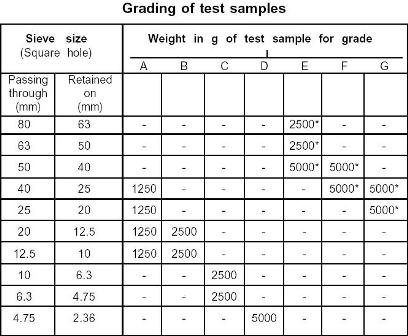Softening point of bitumen (IS 1205:1978)
Softening point of bitumen is that temperature at which it attains some degree of softness.The test is conducted by using Ring and Ball apparatus. A brass ring
containing test sample of bitumen is suspended in liquid like water or
glycerin at a given temperature. A steel ball is placed.upon the bitumen
sample and the liquid medium is heated at a rate of 50C per minute. Temperature is noted when the softened bitumen touches the metal plate which is at a specified distance below. Generally, higher softening point indicates lower temperature susceptibility and is preferred in hot climates.
Apparatus
Ring and ball apparatus with all components, Thermometer, heating apparatus, Bath and stirrer. | |||
| Softening point apparatus |
Procedure
- Sample of bitumen is heated to a temperature between 75° and 100°C above the approximate softening point until it is completely fluid and is poured in heated rings placed on the metal plate.
- To avoid sticking of the bitumen to metal plate, coating is done to this with a solution of glycerin.
- After cooling the rings in air for 30 minutes, the excess bitumen is trimmed and rings are placed in the support.
- At this time the temperature of distilled water is kept at 5°C. This temperature is maintained for 15 minutes after which the balls are placed in position.
- Then the temperature of water is raised at uniform rate of 5°C per minute with a controlled heating unit, until the bitumen softens and touches the bottom plate by sinking of balls. At least two observations are made. For material whose softening point is above 80°C, glycerin is used for heating medium and the starting temperature is 35°C instead of 5°C.
























